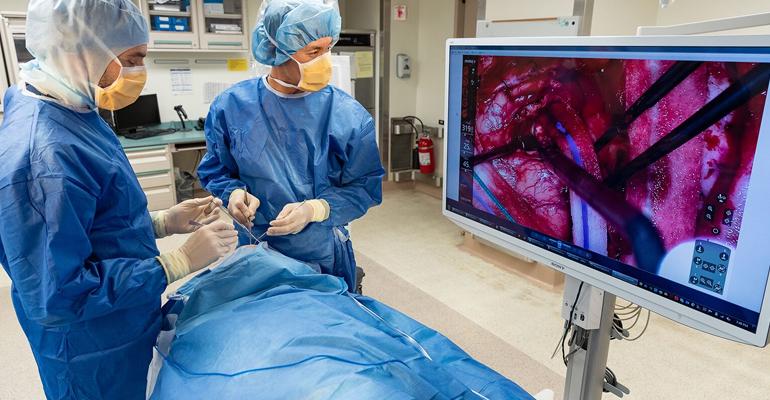

Endovascular neurosurgical procedures refer to minimally invasive techniques used to treat various neurological conditions by accessing the affected area through blood vessels. These procedures are performed by neurosurgeons or interventional neuroradiologists using catheters, guidewires, and other specialized instruments. Endovascular techniques have become increasingly popular due to their lower risk, shorter recovery times, and reduced trauma compared to traditional open surgeries. Here are some common endovascular neurosurgical procedures:
Cerebral Angiography:
Purpose: Diagnostic imaging of blood vessels in the brain.
Procedure: A contrast dye is injected into the blood vessels, and X-ray images are taken to visualize the blood flow and identify abnormalities.
Endovascular Aneurysm Coiling:
Purpose: Treatment of intracranial aneurysms.
Procedure: A catheter is navigated to the aneurysm site, and platinum coils are placed within the aneurysm to induce blood clotting and prevent rupture.
Carotid Artery Stenting:
Purpose: Treatment of carotid artery stenosis (narrowing).
Procedure: A stent is placed in the carotid artery to keep it open and improve blood flow to the brain.
Intra-arterial Thrombolysis:
Purpose: Treatment of acute ischemic stroke.
Procedure: Medications are delivered directly into the blocked blood vessel to dissolve the clot and restore blood flow.
Embolization:
Purpose: Treatment of vascular malformations, tumors, or abnormal blood vessel connections.
Procedure: Embolic agents (particles or glue) are injected into the blood vessels to block or reduce blood flow to the targeted area.
Intracranial Stenting:
Purpose: Treatment of intracranial stenosis.
Procedure: Similar to carotid artery stenting, a stent is placed within the intracranial arteries to address narrowing.
Flow Diversion for Aneurysms:
Purpose: Treatment of complex and large aneurysms.
Procedure: A flow-diverting stent is placed across the neck of the aneurysm to redirect blood flow and promote the formation of a stable clot.
Vertebroplasty and Kyphoplasty:
Purpose: Treatment of vertebral compression fractures.
Procedure: Cement is injected into the fractured vertebra to stabilize and relieve pain.
Endovascular neurosurgical procedures continue to evolve with advancements in technology and techniques, offering patients alternative options for the management of various neurological conditions. The choice of procedure depends on the specific diagnosis, patient characteristics, and the expertise of the medical team.